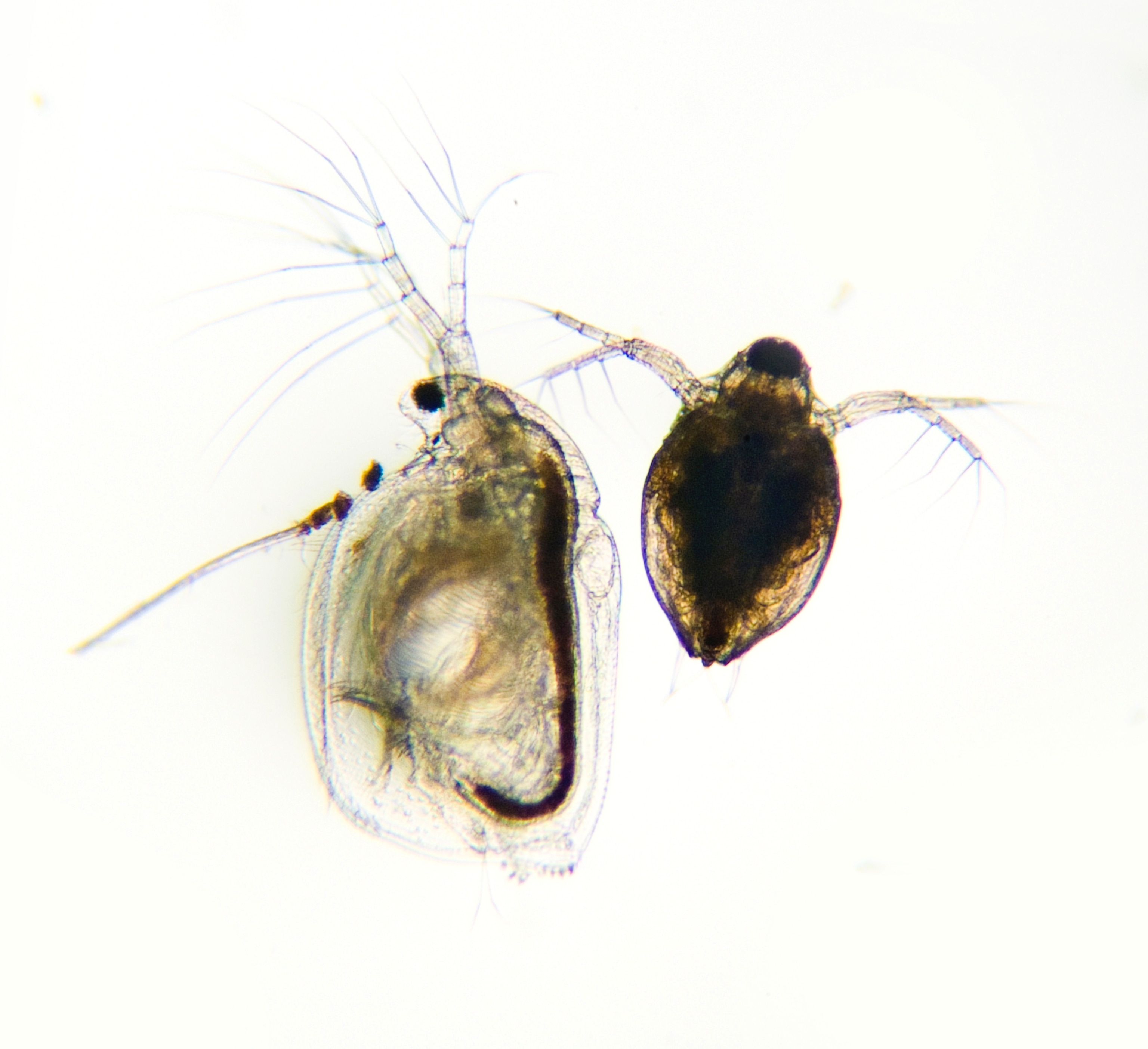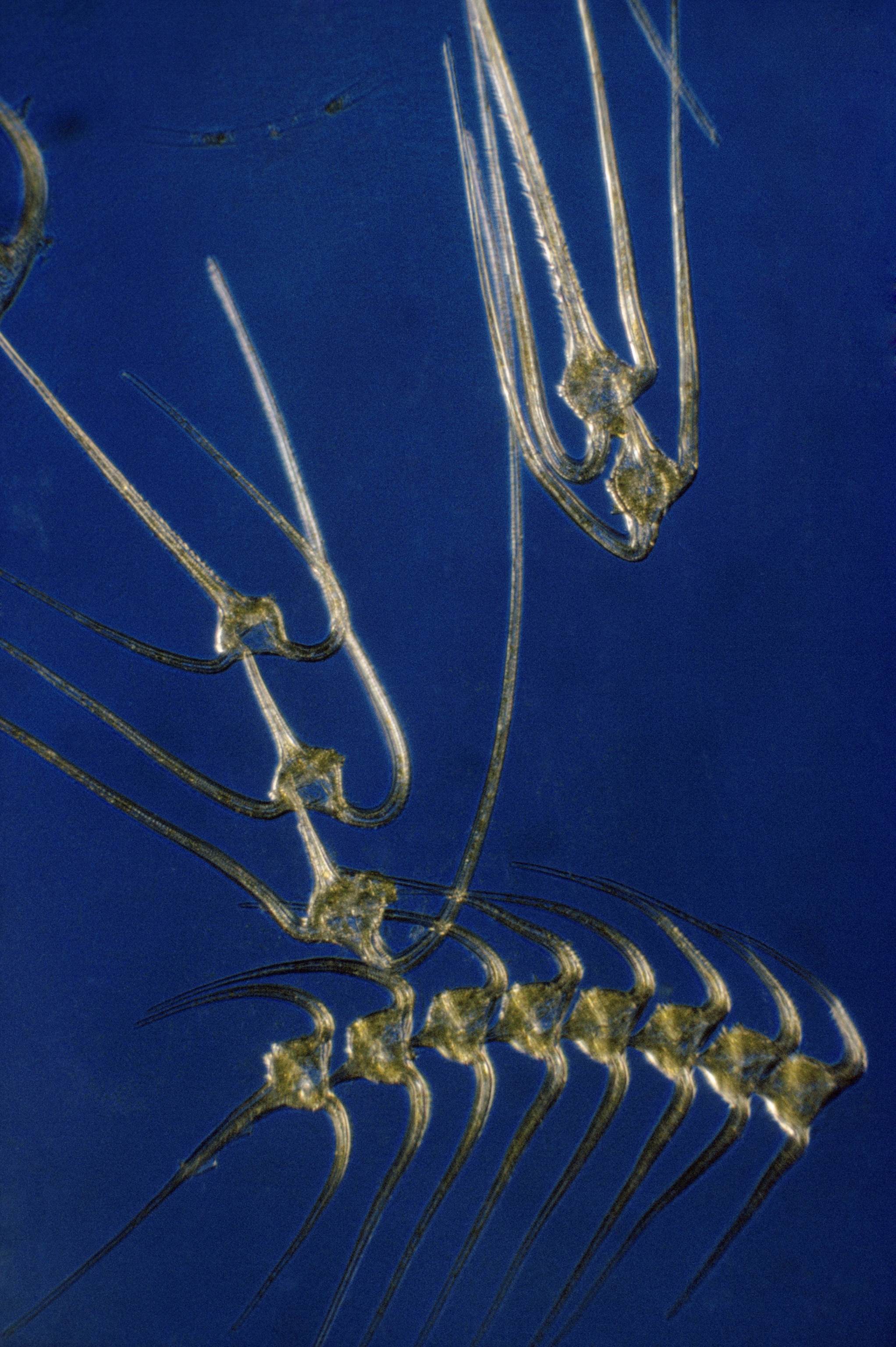
These Tiny Organisms Have Some Really Weird Shapes
One virus looks like a miniature lunar lander.
Most of us don’t bother to look amazing unless we know we'll be seen.
Not so for the dazzling creatures of the microscopic world. When Bing Jose asked if any microscopic animals have horns, Weird Animal Question of the Week went in search of these tiny wonders.
Daphnia
A water flea named Daphnia is a microscopic crustacean with some horn-like headgear.
The 0.01-inch-long water flea is able to change its body into a bigger (and thus more inedible) shape when threatened by a predator, like the tiny backswimmer, says Anne Estes, a microbiologist at the University of Maryland School of Medicine.

Daphnia can also quickly grow spines, helmet, or crests to enlarge themselves and decrease their palatability.
Bacteriophages
These helpful little viruses “look like lunar landers,” says Estes, who also runs the blog Mostly Microbes. Luckily for us, the organisms like to attack bacteria that's harmful to humans, such as E. coli and Salmonella.
Each type of bacteriophage has a “lock and key” mechanism that fits a certain types of bacteria, Estes says. When they find their match, the viruses inject it with their DNA, which replicates, killing the host and freeing the new phages to go and infect some more bacteria.
Because these viruses prey on these types of troublesome bacteria, scientists are investigating them as an alternative to antibiotics. Instead of "carpet bombing" a ton of the body's bacteria with antibiotics, Estes says, you can just “send in little snipers to just take out the bad guys.”
Dinoflagellates
The largest of these mostly marine microorganisms is only 0.07 inch long and many “have interesting shells, including horn-like structures,” Jay Nadeau, physicist and microbiologist at McGill University in Montreal, says via email.

“Ceratium is the genus most known for its horns,” Nadeau says. They change shape depending on the temperature and salinity of the water and are believed to control buoyancy.
In some species, horns store cyanobacteria that can provide the dinoflagellates with nitrogen when nutrients are low.
Though dinoflagellates are infamous for causing red tides, they have a beautiful side, too. “Many show bioluminescence, making seawater glow when disturbed,” Nadeau says. (Related: "Glowing Blue Waves Explained")
Estes adds that some of the 1,555 known species of dinoflagellates make their home in other animals, like jellies or corals. Who hasn’t had a roommate that was both lovely and toxic?
Rotifers
These teensy creatures don't have horns, but they have another enviable adaptation.

Like the well loved tardigrade, or water bear, rotifers can survive extreme conditions and even parasites, by dehydrating and then rehydrating when conditions improve—possibly years later. (Related: "Five Extreme Life Forms That Live on the Edge")
Only 0.001 inch long, rotifers contain about a thousand cells, organs, and jaws called "trophi.''
Fair enough, considering their outstanding achievements.
Weird Animal Question of the Week answers your questions every Saturday. If you have a question about the weird and wild animal world, tweet me, leave me a note or photo in the comments below, or find me on Facebook.




